Dr. Akinleye Research & Development |

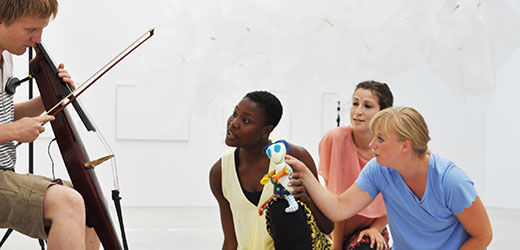
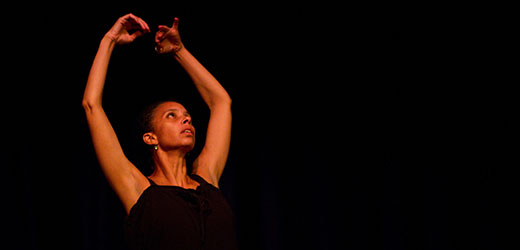
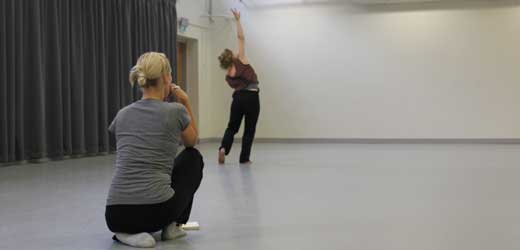
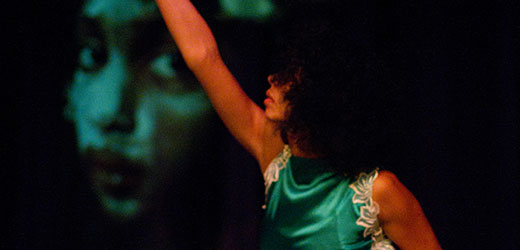
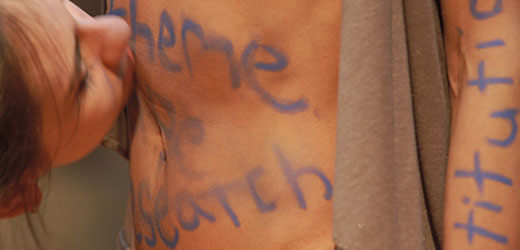
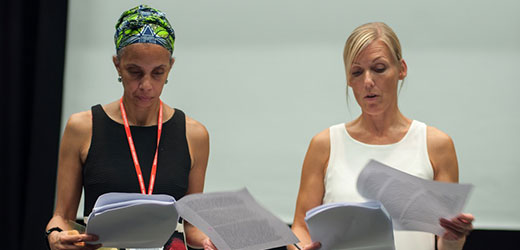
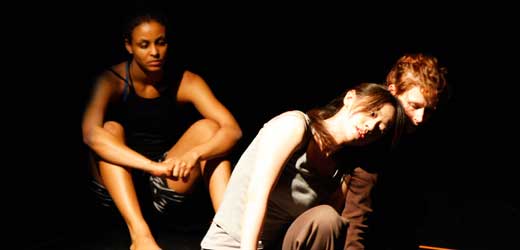

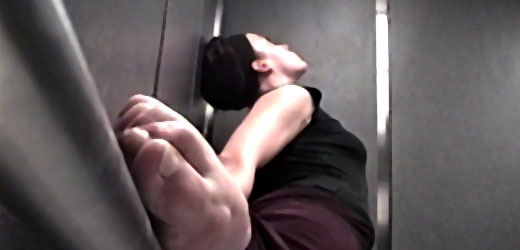
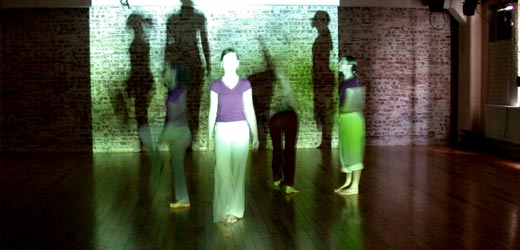
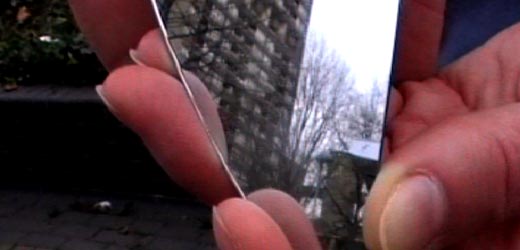
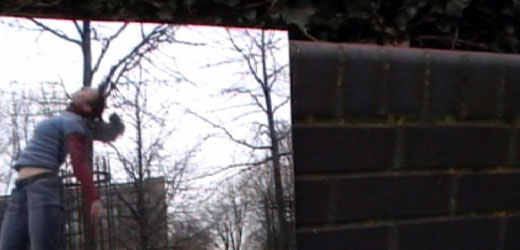
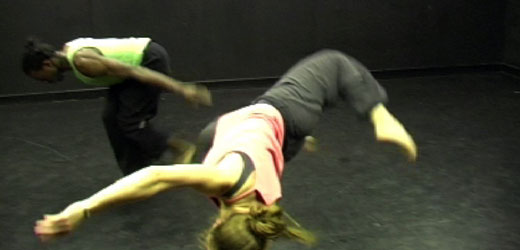
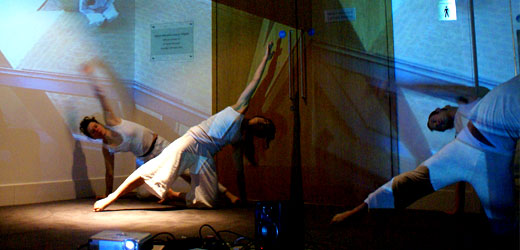


Research Projects
Being-in-Place
Choreographing the City: as /at the city limits: My Fellowship Project at Theatrum Mundi (Phase one February 2019 to September 2019) has been looking at an emerging lexicon (for movement) that connects to ideas shared across dance-making (choreography), to building/city-making (community).
I am interested in how dance contributes to larger discussions across subject areas that engage with movement in space/time, and in the Place making that the experience of dance creates. Words such as, rhythm, flow, sensation, are shared vocabulary about moving in space, beyond dance. Words whose meanings differ only slightly but these delicate differences can inform across subject areas and edify the spaces we create together. This articulating and valuing the significance of where Self begins, or ends, or is continuous in environment that dance choreography explores shares inquiry with colleagues in architecture and engineering (see Pallasmaa, 2005; Rasmussen, 1959), social sciences (see Deleuze & Guattari, 1983, 1987; Sennett, 1994), and geography (see Lefebvre, 2004). Sitting in dance and reaching beyond the isolating notion of ‘subject areas’ I look at finding shared spheres of inquiry into the inter-connectedness of Being-in-Place.
Architecture dance share the same languages of shape and form - both drawing on texture, colour and rhythm, both manipulating solid (body or brick), space and time to define themselves.
Site-specific dance frames the architecture - directing the eye of the observer to notice how they see shape as it is juxtaposed, body to buildings.
The person who watches dance does none of the physical work themselves but in perceiving the performance they experience the rhythm of it as though it were in their own body. In much the same way you can experience architecture, when through the installation attention is brought to the line and curves of the physical environment, the observer starts to experience a building with the same sense of movement that they observe dance. By this process of re-creation and redefinition of spaces, dance/ movement joins with architecture to create work that is alive within the visual frame of the eye, not just within the body of the dancer.
My work not only offers the creative, performance based relationship with architecture, but as choreographer I am working with physical narrative as well. Not only do building/ sites hold the memories and experiences of the people who live in and around them; they also have their own physical narrative that is integral to the structure and design of the site itself.

Narrating Spaces
www.narratingspaces.com
On-going research exploring voicing the embodied experiences of those identifying as women. This project takes an embodied approach to understanding our lived experiences using dance as a methodology for women to express and retell their histories, hopes and challenges. The bodies of those who identify as women are rich with cultural symbolism, public and private constructs of Self, and perceptions of moral, sexual and political boundaries.
Living Jobs, an interdisciplinary, multimedia work of scholarly art: while there is a plethora of scholarship on all aspects of labor and policy conversations about employment are ubiquitous especially during election years, the lived experience of working in all its complexities is difficult to capture. Yet, the immense popularity and staying power of such books as Studs Terkel’s Working: People Talk About What They Do All Day (1974)) and Barbara Ehrenreich’s Nickle and Dimed: On (not) getting By in America (2001) underscores that there is an audience and need for narratives about particular individual experiences of work -- precisely the type of fine grained detail that often gets left out of academic and policy debates. This type of aggregation of experiences can be especially problematic when discussing jobs held or sought by low income women.
In order to ensure that the actual lived experiences and voices of women are part of the discussions on economic security and mobility at a 2014 Michigan Meeting, Centre for the Education of Women commission this interdisciplinary and multimedia artwork on the topic of good jobs. This work (working title: Living Jobs) is both scholarly art and artistic research and used dance and film as research methodologies to bring to life the multi-layered experience of how women express their hopes and searches for good jobs as well as the barriers that prevent so many from finding them. This research has thus far led to the dance work ‘Untitled: Women’s Work’, the film by the same name
See the
video 'Untitled: Women's Work' www.routledge.com/Researching-Embodied-Sport-Exploring-movement-cultures
‘Passing’ Project: Exploring the idea of ‘passing’, this project investigates the many historical ways those identifying as women have ‘passed’ (passed as female, passed as male, passed as white, passed exams, passed through education) – all of which include a physical impact on the body – embodied experience written on and to create the ‘female’ body. The exploration has thus led to two dance works – Passing (1): I right my own story, and Passing (2): The price of a ticket, as well as a book chapter ‘Narrating Spaces’ in the book ‘Women in Dance: Stepping out of the barriers’ Serendipity Artists Movement Ltd.
www.amazon.co.uk/Black-Women-Dance-Stepping-Barriers-Hilary-Carty

Dance-Art, Learning, and Young people
On-going research exploring how we develop young people’s engagement with art as an embodied experience, including how the educational experience can be embodied and artistic, and include developing physical and visual literacy. This involves creating performance work and workshops for young audiences and their families, developing school curriculum, and making sites of culture such as Museums, and theatres welcoming spaces for young people to explore.
Dance and the museum www.ilaproject.com
This research develops dance works for children and their families. This work is aimed at the development of performance located in museums inspired by existing exhibits, (going on to tour community centres and schools) rather than traditional theatre settings. The project draws on the visual arts and interactive nature of installation present in museums in order to create dance performance that is inspired by art forms other than dance. The research goal is to explore ways to introduce young people to a multi-dimensional relationship with the Arts, crossing art form boundaries.
See the video
Comenius Regio
This international Comenius Regio project linked Spain and UK: Working with PLEY and Haringey council [UK] and Theatre Lasala and Sabadell [Spain] Adesola was part of a reach team of two independent choreographers and musicians investigating the learning environment of under-fives in Children’s Centres in Urban areas. This involved looking at the culture in education / schools and the home life cultures of children in London [UK] and in Sabadell [Spain]. The project extended over two years and involved using art practices and exchange to link the children’s centres in UK and Spain.

Embodied identity and its relationship to learning and the environment
Awarded a research fellowship by Canterbury Christ Church University, Adesola's PhD research project, took the form of written papers, community performance and works created for professional dancers. Adesola’s PhD dissertation is a dance-based interdisciplinary ethnographic inquiry into the notion of embodiment as a way to understand the lived experience. Material for the research was collected primarily through case studies in four separate schools in Great Britain. Dance, as an embodied form of communication was used in conjunction with spoken words and art installations as a means of exploring the research questions.

Research Statement
Research context: My work takes a soma-centred approach to understanding the lived experience, following the work of John Dewey (Dewey 1958; Dewey 2005; Dewey et al. 1989). This soma-centred approach uses dance as a methodology within a context of sociology of the body. Care for and regulation of the body is associated with the rights of the individual (Bourdieu and Nice 1990; Burkitt 1999; Foucault and Sheridan 1979; Gould 1996; Shilling 2003; Sullivan 2001; Synnott 1993). Our bodies and (body parts) are rich with cultural symbolism, public and private constructs of Self, and perceptions of moral, sexual and political boundaries. My work centers around the way people understand and experience their bodies. I use dance as a somatic language that can communicate corporeal ideas.Methodology: My research is triangulated in a rhizomatic structure nurtured by three roots found in Somaesthetics (Shusterman 2000) The first root Analytic Somaesthetics: is a theoretical root that includes traditional ontological and epistemological issues of the body but also includes the sort of socio-political inquiries Michel Foucault and Pierre Bourdieu have made central as well as body politics in which feminism, dis-ability, gender and size are also located. This root includes more universal ontological inquiry into the mind / body paradigm particularly looking at the socially constructed body.
The second root is Pragmatic Somaesthetics. This root deals with the practical inquiry and instruction of engagement with the body. This inquiry includes interest in both representational and experiential forms, practices such as tattooing, body piercing, massage, the study of dance, martial arts and cultural and spiritual ceremonies. It is contributed to by psychosomatic therapies such as Alexander Technique, and yoga masters such as B.K.S. Iyengar. Within this root is exploration into use of the body, from how it can be presented and represented to how it can be experientially present. I also look at the body in terms of its performative role such as through health, strength, and skills in performance-oriented practice.
The third root Practical Somaesthetics is to do with the practicality of ‘doing’. This root is about the expertise and experience of activity. This includes valuing ‘embodied experience’ through finding ways to acknowledge non-text based data and looking at a plurality of ways to present findings, such as through live performance.
My research is underpinned by the notion that we are embodied beings, thus I actively engage with methodologies that challenge dualist structures (subject / object, mind / body). I work within a Pragmatist paradigm following John Dewey, with consideration for the work of phenomenologists such as Maurice Merleau-Ponty, which places immediacy of somatic experience at the heart of understanding epistemological and ontological definitions. I use the methodological approach of narrative inquiry and ethnography in order to acknowledge the paradox or tensions around ‘capturing’ embodied experience, particularly in text. Therefore my research methodology attempts to mediate the communication of corporeal and perceived ‘realities’ between respondent, researcher and reader. This allows me to analyse and present findings in traditional academic presentations such as papers, as well as offer more embodied reports, such as through installation or performance.
Back to top

Research Mission
To shed light on and listen to the narratives of people whose bodily experiences do not conform to the mainstream (with the notion that there is value and knowledge in diversity). Part of my research mission is to further develop research methodologies that acknowledge the multidimensional nature of the human experience. The precedent for this ranges across how a number of disciplines have approached the problems of reporting on embodiment. This nourishes my interest in how I can collaborate across disciplines.
In past research projects I have collaborated with architects and urban planners in looking at how the body experiences place, with dancers looking at the multi-modal forms embodied beings use to communicate; with sociologists looking at the corporeal experience of individuals in particular sections of society, with educationalist looking at how the embodied self learns and is affected by cultural attitudes, while looking at how an embodied approach to the lived experience can inform attitudes towards formalised learning.

Publications
(ORCID iD: 0000-0001-7342-8292)
Akinleye, A. and Kindred, H. (2019) Guest Editors Journal of Dance & Somatic Practices, Volume 11, Number 1, Intellect, www.ingentaconnect.com/content/intellect/jdsp/2019/00000011/00000001;jsessionid=wi418chwgb60.x-ic-live-03
Akinleye, A. (2019). ‘[…] wind in my hair, I feel a part of everywhere […]’: Creating dance for young audiences narrates emplacement, Journal of Dance & Somatic Practices, Vol 11, No. 1, pp. 39-47 https://doi.org/10.1386/jdsp.11.1.39_1
Akinleye, A. (2019). Play: 'ideas are statements not of what is or what has been but of acts to be performed'. In J. Bacon, Hilton, R., Kramer, P., and Midgelow, V. (Ed.), Researching (in/as) Motion: A Resource Collection, Artistic Doctorates in Europe: Theatre Academy, University of the Arts Helsinki. https://nivel.teak.fi/adie/play/
Akinleye, Adesola (2018) Move Meant in Stuart Hall Foundation Skin Deep, Iss: 8, pp.31 – 38 https://skindeepmag.com/products/magazine-issue-8-movements/
Akinleye, A. (2018). Border Identities Animated. UK: Foundation for Community Dance. https://www.communitydance.org.uk/DB/animated-library/border-identities?ed=43340
Akinleye, A. ed., (2018). Narratives in Black British Dance: Embodied Practices. London: Springer. https://www.palgrave.com/gp/book/9783319703138
Akinleye, A. & Kindred, H. (2018). In-the-Between-ness: Decolonising and re-inhabiting our dancing, in Narratives in Black British dance: embodied practices pp. 65-78. London: Palgrave MacMillian www.palgrave.com/gp/book/9783319703138
Akinleye, Adesola & Rose Payne (2016) Transactional Space: Feedback, critical thinking, and learning dance technique, Journal of Dance Education, Vol.16 Iss: 4, pp.144-148, DOI: 10.1080/15290824.2016.1165821 http://www.tandfonline.com/doi/full/10.1080/15290824.2016.1165821
Akinleye, Adesola (2016) Narrating Spaces chapter in Brookes, Black Women in Dance: Stepping out of the barriers, Serendipity Artists Movement Ltd, pp. https://www.amazon.co.uk/Black-Women-Dance-Stepping-Barriers/dp/0992631939
Akinleye, Adesola (2015) Her life in Movement: Reflections on embodiment as a methodology chapter in Wellard, Ian Researching Embodied Sport: Exploring movement cultures, Routledge, pp.178-196 https://www.routledge.com/Researching-Embodied-Sport-Exploring-movement-cultures/Wellard/p/book/9781138793446
Nottingham, Paula & Adesola Akinleye (2014) Professional Artefacts: Embodying ideas in work-based learning, Higher Education, Skills and Work-Based Learning, Vol. 4 Iss:1 pp.98 -108 http://www.emeraldinsight.com/doi/abs/10.1108/HESWBL-09-2012-0036
Peter Bryant, Adesola Akinleye & Alan Durrant, (2013) Educating the early career arts professional using a hybrid model of work based learning, Higher Education, Skills and Work-based Learning, Vol. 3 Iss: 1, pp.17 – 29 http://www.emeraldinsight.com/journals.htm?articleid=17078211&ini=aob&
Akinleye, Adesola (2012) Orientation for Communication: embodiment and the language of dance, European Journal for the Philosophy of Communication, Vol. 4 Iss: 2 pp.101-112 https://www.ingentaconnect.com/contentone/intellect/ejpc/2012/00000004/00000002/art00001;jsessionid=2e2n0pd2a5u23.x-ic-live-03
Akinleye, Adesola (2008) Geography of the Body, Dance UK issue 70, pp 21 https://www.danceuk.org/media/cms_page_media/207/Dance%20UK%20magazine%20issues%20back%20catalogue.pdf
Akinleye, Adesola (2008) Rain Dancing and Sun Dancing: working with refugee children through dance, Animated, Winter 2008 https://www.communitydance.org.uk/DB/animated-library/rain-dancing-and-sun-dancing?ed=14042
Back to Activities and Research
